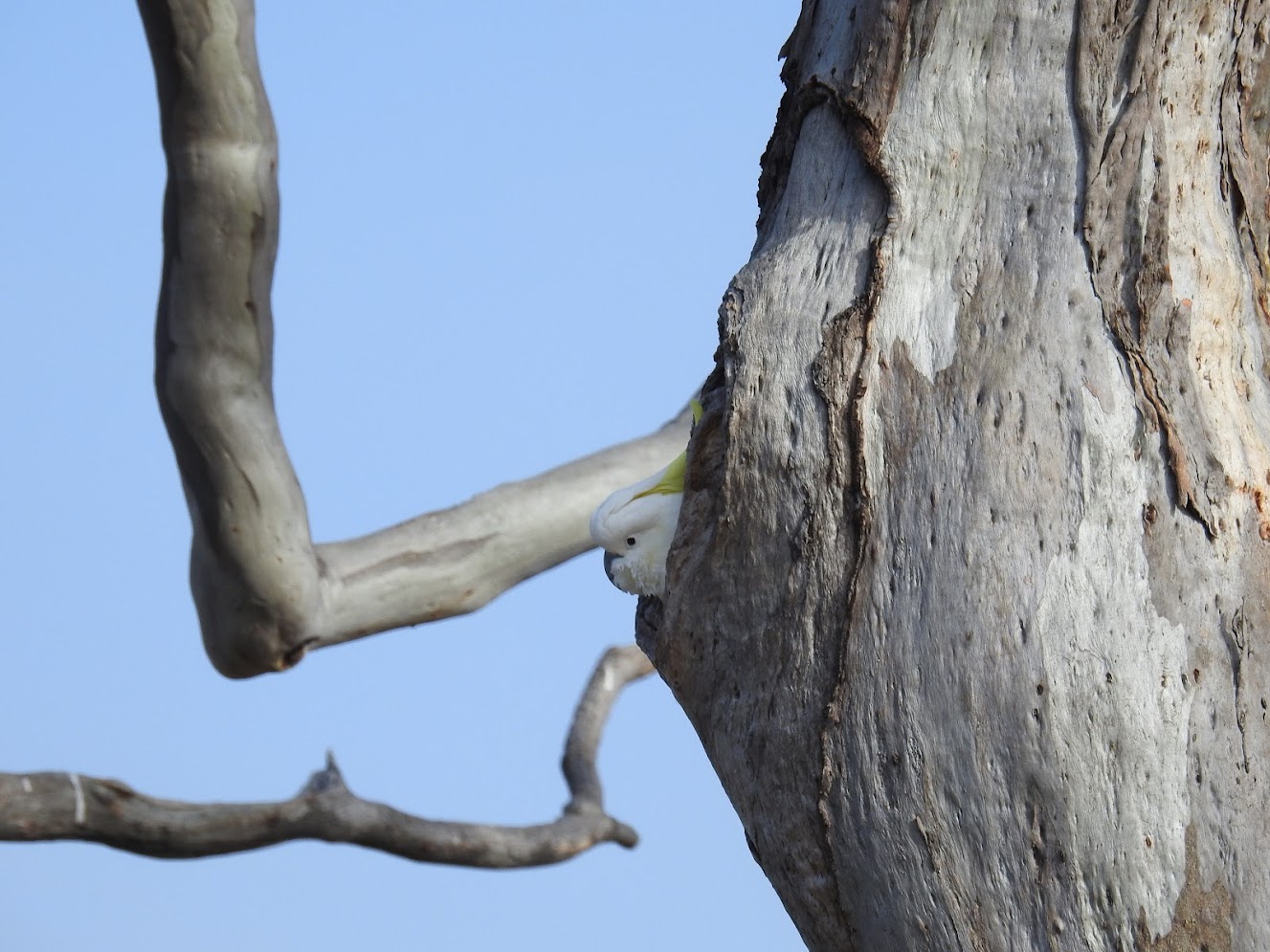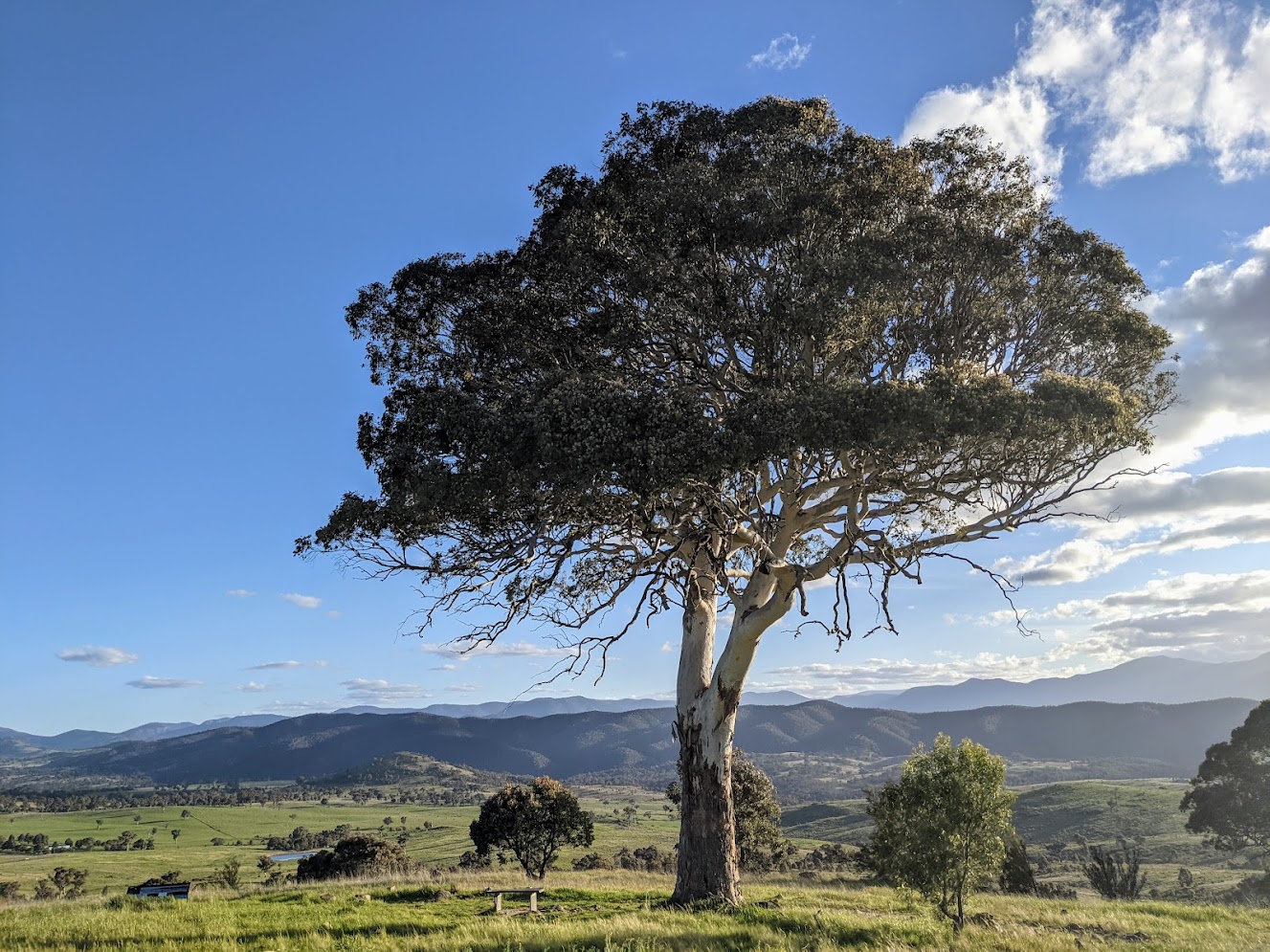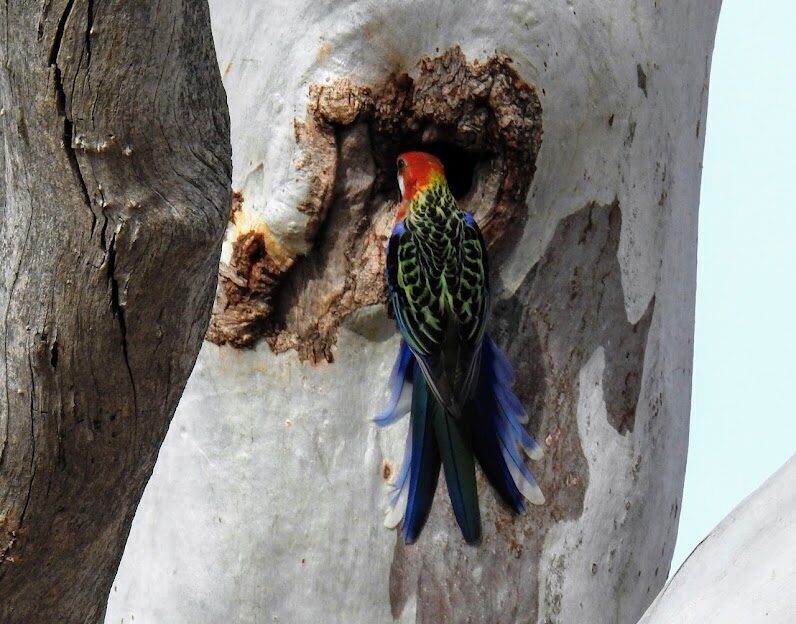Trees sit at the heart of environmental activism. They symbolise so much that is healthy about the environment, here in Australia and around the world. They oxygenate the air for us. They provide habitat for animals and birds. They provide shelter and resources for humans. They hold important cultural value to First Nations People. They speak to our hearts, and in forests, they even communicate with each other. And the older they are, the more valuable they are. It is because of the value of old trees that we have seen battles for forest protection everywhere that forests have utilised as resources.
In our part of the world, mature trees play an integral role in the grassy woodland ecosystems that were once dominant here. Rather than necessarily threatened by timber extraction, they have faced threats from clearing for agriculture, and now, an ever-expanding urban footprint.
Imagine – a Yellow Box (Eucalyptus melliodora) might live until it’s 500 years old. It can take 60-80 years for a Yellow Box to reach full height, and tree hollows may not form until the tree is 120-200 years old (Gibbons and Lindenmayer 2002). So to protect these wonderful trees, we must take a longer perspective. Importantly, you cannot cut down a 200 year old Yellow Box, and expect to replace it with five new trees without environmental loss. Intergenerational planning is crucial.
Mature trees, including hollow bearing trees, play an important role in providing habitat for birds, reptiles and mammals. Fauna species that occur in the ACT that rely on hollow-bearing trees include possums, gliders, owls, parrots, cockatoos, pardalotes, antechinus, ducks, kingfishers as well as numerous species of bats, snakes, frogs, lizards and invertebrates (NSW NPWS 1999).
Hollow-bearing trees are not only of benefit to the local ecology when standing. Mammals living on the ground will especially benefit from fallen trunks and branches for shelter and foraging. Trees collapsing in riparian areas provide habitat for fish and other aquatic organisms. As the trees decay they add to soil nutrient levels and soil organic components, with the fungal agents responsible for decay being used as food by various fauna species (Victorian Department of Sustainability and Environment, undated).
Last week, the ACT finally released its Draft Action Plan to Prevent the Loss of Mature Native Trees. It has been five years since the Conservation Council and member groups began campaigning for the formal protection of hollow bearing native trees and four years since the loss of mature native trees (including hollow-bearing trees) was added to the list of Key Threatening Processes under the Nature Conservation Act 2014.
While it might seem unfair to chide the ACT Government over the delay, the reality is it’s a delay that has been somewhat perilous for Canberra’s biodiversity. Modelling released with the Draft Plan showed that mature tree loss across urban Canberra occurs at an alarming rate, with 14,455 mature trees lost between 2015-2020. That is, 6.2% of the total mature trees, as at 2015. Considering these numbers, the delay preparing the Plan has likely had detrimental impacts.
With consultation on the Draft Plan now open until 27 May 2022, the final plan is not expected to be released until November 2022. As new areas of the ACT are subdivided for urban developments, such as Denman Prospect, the swift implementation of this plan is vital.
If you would like to have input into the Conservation Council’s submission on the Draft Action Plan, please contact Biodiversity Campaigner Peta Bulling.
To keep up to date with the Conservation Council’s future events, subscribe to our mailing list or keep an eye out on our Facebook and Twitter.



